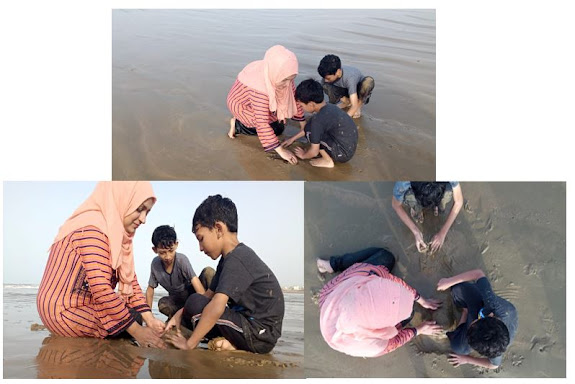Constructive Activities
Counting Exercise with Spindle Boxes
Ø Through this
activity, the child's mind was explained that each digit identifies a specific
number of things. He also got acquainted with the zero concept in this
exercise. The number sequence was
also repeated.
Puzzles
Ø It
was puzzle exercise in which the child worked well.
Story
Telling
Ø The story telling is a very strong weapon for communication, vocabulary and to convey your message. The group of children enjoyed it very much.
Addition
Exercise
Ø Children
are able to count from memory long before they understand the quantity that
each number represents. ...
Ø Physically
counting objects is an important step in teaching a child about numbers. ...
Ø Counting
objects initiates the skill of 1:1 correspondence – the understanding that
every object can only be counted once.
Dimensions
Exercise (Visual Sense) with Pink Tower
Ø The
Pink Tower helps a child build a concept of size in three dimensions. This
includes working on visual perception, and awareness of dimension, both leading
to an understanding of size in the environment. The Pink Tower also helps
develop a child's fine muscular coordination.
Number
Rods (Counting Exercise)
Ø
In this activity,
introduce the child from 1 to 10 with all the digits names and their quantity.
After practice, the child also remembered the sequence from 1 to 10.
Color Matching Exercise with Color Tablets
Ø The
Color Tablets were developed by Maria Montessori to help children develop their
sense of color discrimination. Children also learn the names of the colors
using the Color Tablets and gain an understanding of primary and secondary
colors.
3
Letter Words (Read Aloud Exercise)
Ø Reading
aloud helps students learn how to use language to make sense of the world; it
improves their information processing skills, vocabulary, and comprehension.
Reading aloud targets the skills of audio learners. Research has shown that
teachers who read aloud motivate students to read.
Opposite Cards
Ø Understanding
the concept of opposites is important as it helps a child to learn how to
compare two different things and to develop a more concrete understanding of a
specific concept (e.g. hard vs soft). Learning opposites also improves a
child's ability to describe things.
Making
of Sentences with Movable Alphabets
Ø The
key purpose of the Moveable Alphabet is to prepare children for writing,
reading, and spelling. The child's use of the material progresses from single
words, to phrases, and eventually to stories. In this way, the Moveable
Alphabet teaches children how to symbolize their own thoughts, and begin to
write creatively
Construction
of Different Shapes
Ø Recognize
and name different shapes. Identify shapes they see in their classroom and
surroundings
Making
of Sand Castles
Ø Together
with the kids, made the sand castle on the beach and invented different things.
Ø The
beach picnic enjoyed a lot. Swimming too. Collected too many seashells and
pebbles as well.
Spelling Building
Writing Practice
Art activity with help of bottle for fine
motor skill development.















Comments
Post a Comment